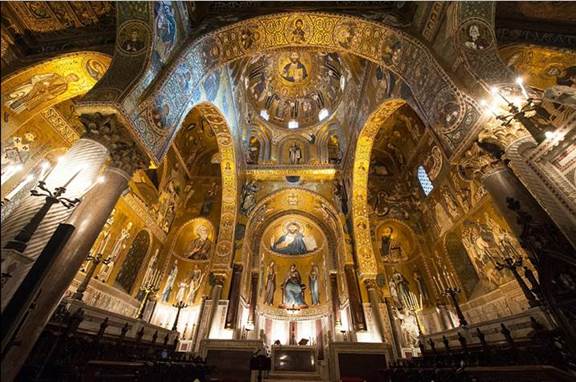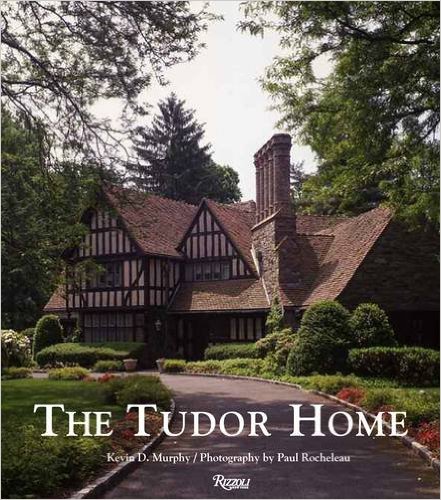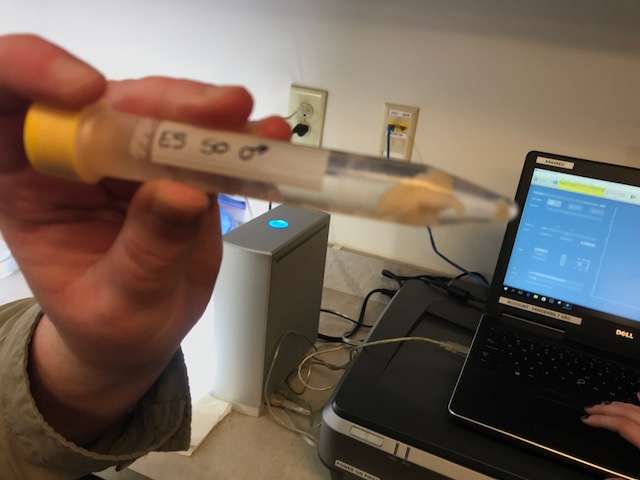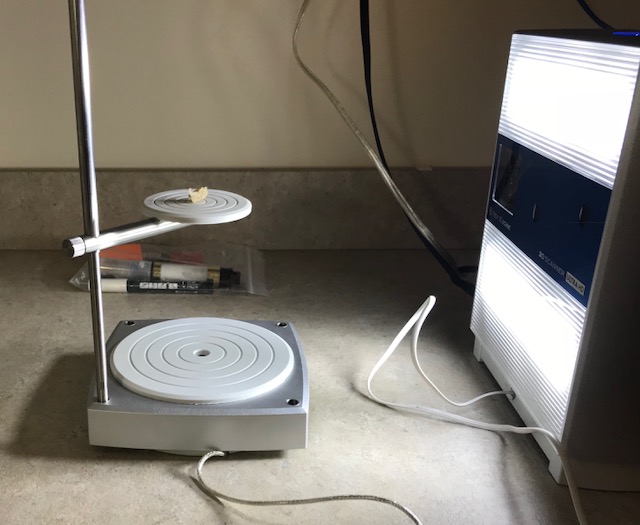HART Major Ellen Dement’s Online Exhibit Highlighted At Celebration of Learning Event
 “Cass Gilbert’s Woolworth Building,” an online exhibit designed by Buchanan Library Fellow Ellen Dement focused on 150 architectural drawings of New York City’s famous building—the tallest building in the world when it was completed in 1913— that were recently acquired by the Vanderbilt Fine Arts Gallery. For her project Dement, HART major and 2017 Downing Grant recipient, created a website that contextualizes these drawings within the larger body of sources on the Woolworth Building.
“Cass Gilbert’s Woolworth Building,” an online exhibit designed by Buchanan Library Fellow Ellen Dement focused on 150 architectural drawings of New York City’s famous building—the tallest building in the world when it was completed in 1913— that were recently acquired by the Vanderbilt Fine Arts Gallery. For her project Dement, HART major and 2017 Downing Grant recipient, created a website that contextualizes these drawings within the larger body of sources on the Woolworth Building.
Dement’s online exhibit was among 34 student projects, posters and presentations from across campus that were featured on January 29 at a Celebration of Learning event hosted by the Vanderbilt Center for Teaching. Students from six colleges and schools exhibited digital timelines, service learning projects, computer games, manufacturing equipment, podcasts, lab research and other products of their work.
“The goal of the event was to provide a picture of immersive student learning at Vanderbilt and to inspire instructors to engage their students not only as consumers of information, but producers of knowledge,” said Derek Bruff, director of the Center for Teaching.
More than 100 faculty, staff and students attended the event in Alumni Hall, which featured three rooms of student work: an exhibition hall with posters and projects, a digital media hall featuring podcasts and more, and a presentation hall with screenings and talks.
As a 2017 Downing Grant recipient, Dement visited Washington, DC, and New York City over the spring break to gather research for her Vanderbilt Library Fellowship project, “Visualizing Cass Gilbert’s Woolworth Building.” She visited collections on the Woolworth Building at the Library of Congress and the New York Historical Society and took a behind-the-scenes tour of the entire Woolworth Building with the building’s manager, Roy Suskin.
“This trip allowed me to find primary sources directly related to my projects that are not available online or through Vanderbilt’s library,” said Dement. “Similarly, visiting the Woolworth Building in person provided a more holistic understanding of Vanderbilt’s collection of drawings and the building’s cultural significance in the history of New York.”
Posted by vrcvanderbilt on February 2, 2018 in Digital Humanities, Events, HART, News, Student/Alumni, Technology, VRC
Christopher Johns to Present Paper at Eighteenth-Century Symposium February 3 at UNC Chapel Hill
 Christopher Johns, Norman L. and Roselea J. Goldberg Professor of History of Art, will present a paper titled “A Villa Fit for Two Queens: Female Royal Patronage in Early Eighteenth-Century Turin” on February 3 as part of the Bettie Allison Rand Symposium in Art History held at the Ackland Art Museum at the University of North Carolina–Chapel Hill.
Christopher Johns, Norman L. and Roselea J. Goldberg Professor of History of Art, will present a paper titled “A Villa Fit for Two Queens: Female Royal Patronage in Early Eighteenth-Century Turin” on February 3 as part of the Bettie Allison Rand Symposium in Art History held at the Ackland Art Museum at the University of North Carolina–Chapel Hill.
The overall theme of the three-day symposium (February 1-3) is Taking Exception: Women, Gender, Representation in the Eighteenth Century, held in honor of Mary D. Sheriff, W.R. Kenan, Jr. Distinguished Professor of Art History, UNC Chapel Hill, and an internationally renowned scholar of eighteenth- and nineteenth-century French art and culture.
The symposium will take place in tandem with the current Ackland Art Museum exhibition, Becoming a Woman in the Age of Enlightenment: French Art from the Horvitz Collection, on view through April 8.
Posted by vrcvanderbilt on February 1, 2018 in Conferences, Events, HART, Lectures, News, VRC
Black Mountain College Symposium Keynote and Performance Held in Cohen Hall on February 1
Vanderbilt’s Department of Art and the Wond’ry present Chance Operations: Art and Education at Black Mountain College, a two-day interdisciplinary symposium (February 1-2) that will examine the contemporary relevance of Black Mountain College’s immersive teaching models on art, design, and education. Artists, curators, students and educators from various disciplines will illuminate Black Mountain’s unique pedagogical approach through lectures, roundtables, readings, concerts and performances.
 On Thursday, February 1, at 6 pm in Cohen Hall 203, Ruth Erickson, Mannion Family Curator at the Institute of Contemporary Art, Boston, and co-curator with Helen Molesworth for the major exhibition Leap Before You Look: Black Mountain College 1933–1957, is the keynote speaker for the symposium with her lecture titled “Learning from Black Mountain College.”
On Thursday, February 1, at 6 pm in Cohen Hall 203, Ruth Erickson, Mannion Family Curator at the Institute of Contemporary Art, Boston, and co-curator with Helen Molesworth for the major exhibition Leap Before You Look: Black Mountain College 1933–1957, is the keynote speaker for the symposium with her lecture titled “Learning from Black Mountain College.”
Examining pedagogy at Black Mountain College, Erickson traces the ways that learning and living coalesced at the college to form a unique experimental environment. She will closely consider a range of examples, including class exercises, campus architecture, performance workshops, and artwork by Ray Johnson, Robert Rauschenberg, Ruth Asawa, and Merce Cunningham, to illuminate the culture of “making do” at the college, which, she argues, allowed for increased experimental ingenuity on the part of students and teachers.
At a reception following Erickson’s talk, Intermission Arts and New Dialect will perform Third Voice, a research lab and performance program incorporating newly composed music, video installation, and dance. The collaboration offers an opportunity for emerging composers and choreographers to connect and develop new works, very much in the spirit of the work done at Black Mountain College. Collaborators include New Dialect choreographers Rebecca Steinberg, James Barrett, Curtis Thomas, Spencer Grady, and David Flores, and Intermission composers George Miller, Christopher Bell, Nathaniel Banks (and Arlie), Spencer Channell, and Matt Kinney and Kay Kennedy. All pieces will be performed for the site-specific event at Cohen that evening.
Free and open to the public, the February 1 event is organized in conjunction with the Fine Arts Gallery exhibition, Looking Back (Looking Forward): The Black Mountain College Experience and John Warren’s Commons iSeminar, The Experimental Arts at Black Mountain College. The schedule of symposium events for Friday, February 2, continues here and will be held at Ingram Studio Arts Center, Room 220, and the Wond’ry.
The two-day symposium is supported by the Department of Art, Department of Theater, and The Wond’ry, with additional support from the Fine Arts Gallery, Department of History of Art, Blair School of Music, the Cinema and Media Arts program, The Ingram Commons, and StudioVU: The Department of Art Lecture Series..
Posted by vrcvanderbilt on January 30, 2018 in Conferences, Events, Fine Arts Gallery, HART, Lectures, News, VRC
Architectural Historian Lisa Reilly to Deliver Goldberg Lecture on February 15
 Lisa Reilly, associate professor of medieval art and architecture, University of Virginia, will deliver the Norman L. and Roselea J. Goldberg Lecture in Art History on Thursday, February 15, at 4:10 pm in 203 Cohen Memorial Hall. Her presentation is titled “The Multilingual Mediterranean: The Cappella Palatina in Palermo and the Court of Roger II,” with a reception afterward in the atrium.
Lisa Reilly, associate professor of medieval art and architecture, University of Virginia, will deliver the Norman L. and Roselea J. Goldberg Lecture in Art History on Thursday, February 15, at 4:10 pm in 203 Cohen Memorial Hall. Her presentation is titled “The Multilingual Mediterranean: The Cappella Palatina in Palermo and the Court of Roger II,” with a reception afterward in the atrium.
Reilly notes that the Normans in Sicily created a visual culture that relies on an assemblage of forms now perceived as culturally diverse, a perception that may not have been the case in twelfth-century Sicily. This assemblage includes what seems to many modern observers to be a disparate set of Roman, Muslim and Byzantine elements. The historical definition of the muqarnas nave ceiling as Islamic, the chapel’s mosaics as Byzantine and its columns as Roman, for example, suggests a kind of compound in which each element retains its own identity. In this view, distinct Muslim, Byzantine and Roman vocabularies are all evident in what can be seen as a visual evocation of Roger’s kingdom and his monarchy.
While this seems self-evident, given the way in which these vocabularies map on to the Muslim, Byzantine and Latin Christian religious affiliations of Roger II and his subjects, the question remains of how what we now clearly see as distinct vocabularies would have been read at the time. Closer examination reveals that these categories are in fact blurred at best and not really viable for the Mediterranean. Just as the chapel itself cannot be described as simply Islamic, Byzantine or Romanesque, neither can its parts. Given the understanding of the Arabic, Greek, French and Latin-speaking Norman court as multilingual verbally, it should also be realized that it is multilingual visually, albeit speaking a network of languages with shared and interconnected vocabularies.
 Reilly publishes and lectures chiefly on Norman architecture and is currently completing a book on Norman visual culture throughout the Romanesque world. Her chief research interest is in the history of Norman architecture in England, France and Italy. Her monograph, An Architectural History of Peterborough Cathedral (Oxford University Press, 1997), clarifies the obscure and tangled building history of one of England’s most interesting medieval monuments, expanding the traditional use of formal and archaeological analysis to include a discussion of the building’s social and political context. She and Kevin Murphy, professor and chair of Vanderbilt’s department of history of art, are co-editors of Skyscraper Gothic: Medieval Style and Modernist Buildings, a volume published last year by University of Virginia Press.
Reilly publishes and lectures chiefly on Norman architecture and is currently completing a book on Norman visual culture throughout the Romanesque world. Her chief research interest is in the history of Norman architecture in England, France and Italy. Her monograph, An Architectural History of Peterborough Cathedral (Oxford University Press, 1997), clarifies the obscure and tangled building history of one of England’s most interesting medieval monuments, expanding the traditional use of formal and archaeological analysis to include a discussion of the building’s social and political context. She and Kevin Murphy, professor and chair of Vanderbilt’s department of history of art, are co-editors of Skyscraper Gothic: Medieval Style and Modernist Buildings, a volume published last year by University of Virginia Press.
Reilly teaches courses on early and later medieval architecture, including urban planning, vernacular architecture, the medieval Mediterranean and lay piety as well as ecclesiastical and secular monuments. She is a leading user of digital humanities technology in teaching and research. Her ongoing research project investigates the medieval design process using digital analysis.
“We are pleased to benefit from Prof. Reilly’s pioneering scholarship on Norman material culture and its relationship to Mediterranean identity, as well as her groundbreaking use of digital methods in architectural history–a central concern of our department,” said Murphy.
Free and open to the public, the Goldberg Lecture is sponsored by the Department of History of Art. Limited parking is available in Lot 95 outside Cohen Hall on the Peabody campus. For more information, call (615) 322-2831.
Posted by vrcvanderbilt on January 30, 2018 in Events, HART, Lectures, News, VRC
Kevin Murphy Interviewed About Tudor Revival Houses for LA Times Article
 Kevin Murphy, chair and professor of history of art, was recently interviewed about Tudor Revival houses for a Los Angeles Times article spotlighting the architectural style that he addressed in a beautifully illustrated book, The Tudor Home (Rizzoli International Publications, 2015).
Kevin Murphy, chair and professor of history of art, was recently interviewed about Tudor Revival houses for a Los Angeles Times article spotlighting the architectural style that he addressed in a beautifully illustrated book, The Tudor Home (Rizzoli International Publications, 2015).
The Tudor-style homes were supposed to recall a pre-modern, pre-industrial, pre-urban and pre-class- and ethnic-conflict period, said Murphy, “which was pretty much an escapist fantasy but nevertheless a pretty powerful one.”
When Wall Street money in the early 1900s gave rise to upscale New York City suburbs, the newly wealthy built homes or “stockbroker Tudors” as they were later dubbed. “They wanted to give the impression of being more established, not be so much nouveau riche as old riche,” said Murphy. For some it was also important to establish Anglo-Saxon bona fides and distinguish themselves from the influx of Southern European and Asian immigrants at the time.
The Tudor Home showcases the wide variety of Tudor homes and the many manifestations the form has taken across the nation. With its distinctive hallmarks—steeply pitched gables and roofs covered in slate or imitation thatch, bays of casement windows with diamond-paned leaded glass, clustered chimney stacks, interiors of wood paneling and plasterwork, and half-timbered and stuccoed facades—the Tudor-style house has been a favorite among homeowners since its birth in sixteenth-century England.
Posted by vrcvanderbilt on January 30, 2018 in HART, News, VRC
Leonard Folgarait and Kevin Murphy Honored at Faculty New Book Celebration
HART Professors Leonard Folgarait and Kevin Murphy were among those honored at a recent reception at the Robert Penn Warren Center for the Humanities in celebration of 2017 faculty book publications in the humanities and social sciences.
Folgarait, Distinguished Professor of History of Art, wrote Painting 1909: Pablo Picasso, Gertrude Stein, Henri Bergson, Comics, Albert Einstein, and Anarchy, which was published last year by Yale University Press. In 1909 Pablo Picasso  embarked on a series of stylistic experiments that had a dramatic effect on modern art. This book examines the ways in which Picasso’s art of 1909 intertwines and engages with the larger intellectual framework of his time and sheds light on how the writings of Gertrude Stein, the philosophy of Henri Bergson, the theories of Albert Einstein, and even American comic strips played a role in the development of Picasso’s unique artistic style.
embarked on a series of stylistic experiments that had a dramatic effect on modern art. This book examines the ways in which Picasso’s art of 1909 intertwines and engages with the larger intellectual framework of his time and sheds light on how the writings of Gertrude Stein, the philosophy of Henri Bergson, the theories of Albert Einstein, and even American comic strips played a role in the development of Picasso’s unique artistic style.
With an insightful, interdisciplinary approach that focuses on how European society was grappling with the larger issues of how to conceptualize, write about, and visualize a rapidly modernizing culture, Painting 1909 presents a methodical exploration of Picasso’s stylistic choices and proposes new reasons for the development of radical modernist art that led to Cubism and, eventually, absolute abstraction.
Kevin Murphy, Andrew W. Mellon Chair in the Humanities and Professor and Chair of History of Art, co-edited (with Lisa Reilly) Skyscraper Gothic: Medieval Style and Modernist Buildings, published in 2017 by the University of Virginia Press. He also wrote American Modernism at Mid-Century: The Work of Morris Davidson for a 2017 student-curated exhibition at the Vanderbilt Fine Arts Gallery, which was distributed by the University of Massachusetts Press.
 Of all building types, the skyscraper strikes observers as the most modern, in terms not only of height but also of boldness, scale, ingenuity, and daring. As a phenomenon born in late nineteenth-century America, it quickly became emblematic of New York, Chicago, and other major cities. Previous studies of these structures have tended to foreground examples of more evincing modernist approaches, while those with styles reminiscent of the great Gothic cathedrals of Europe were initially disparaged as being anti-modernist or were simply unacknowledged.
Of all building types, the skyscraper strikes observers as the most modern, in terms not only of height but also of boldness, scale, ingenuity, and daring. As a phenomenon born in late nineteenth-century America, it quickly became emblematic of New York, Chicago, and other major cities. Previous studies of these structures have tended to foreground examples of more evincing modernist approaches, while those with styles reminiscent of the great Gothic cathedrals of Europe were initially disparaged as being anti-modernist or were simply unacknowledged.
Skyscraper Gothic brings together a group of renowned scholars to address the medievalist skyscraper—from flying buttresses to dizzying spires; from the Chicago Tribune Tower to the Woolworth Building in Manhattan. Murphy wrote about the Trinity and U.S. Realty Buildings
Morris Davidson (1898–1979) was an abstract painter, teacher, and writer with expansive interests that covered a wide range of approaches, and indeed a tenacious commitment to, abstract painting. American Modernism at Mid-Century: The Work of Morris Davidson is the first comprehensive survey of a little known yet important twentieth-century American artist, presenting new research into the significance of his life’s work and using it as a lens to view many iterations of abstraction practiced from the 1930s through the 1970s.
Posted by vrcvanderbilt on January 24, 2018 in Events, HART, News, VRC
Take a Polaroid on January 25 and Become Part of the Fine Arts Gallery’s Warhol Exhibition
 In conjunction with FAMOUS! (and not-so-famous): Polaroids by Andy Warhol, currently on view in Cohen Hall, the Vanderbilt Fine Arts Gallery is hosting a special program, Picture Me! Vanderbilt students can take a Polaroid, just like Andy Warhol, and become a part of the exhibition itself. The event will be held on Thursday, January 25, from 4 to 7 pm.
In conjunction with FAMOUS! (and not-so-famous): Polaroids by Andy Warhol, currently on view in Cohen Hall, the Vanderbilt Fine Arts Gallery is hosting a special program, Picture Me! Vanderbilt students can take a Polaroid, just like Andy Warhol, and become a part of the exhibition itself. The event will be held on Thursday, January 25, from 4 to 7 pm.
The exhibit affords a glimpse into Warhol’s creative process and the people—friends and clients—in his life. From 1970 to 1987, Andy Warhol took scores of Polaroid and black-and-white photographs, the vast majority of which were never seen by the public. Students are encouraged to think about the role of photography in creative endeavors, friendships, and the construction of fame, by taking their own Polaroids to add to the exhibition.
*Andy Warhol (American, 1928-1987) Dolly Parton, 1985, Polacolor ER, 4 1/4 x 3 3/8 inches, Gift of the Andy Warhol Foundation for the Visual Arts.
Posted by vrcvanderbilt on January 24, 2018 in Events, Fine Arts Gallery, HART, News, Student/Alumni, VRC
Vivien Fryd Addresses “Heroic Rape” Tradition in Western Art at Parthenon Symposium on January 25
 Vivien Green Fryd, professor of history of art, will address the tradition in western art that contemporary feminist artists have dubbed the “heroic rape” in a lecture at 6 pm on January 25 at the Nashville Parthenon.
Vivien Green Fryd, professor of history of art, will address the tradition in western art that contemporary feminist artists have dubbed the “heroic rape” in a lecture at 6 pm on January 25 at the Nashville Parthenon.
Her lecture, “Representing and Challenging the ‘Heroic Rape’ Tradition in the History of Western Art,” is held in conjunction with the Parthenon’s current exhibit, An Archaeologist’s Eye:The Parthenon Drawings of Katherine A. Schwab, which examines the sculptural ornamentation of the Parthenon.
“Since antiquity artists have created paintings and sculpture that aestheticized and glorified, as many of the Parthenon sculptures did, a violent sexual act with a patina of heroic mythology and history,”said Fryd. “Scholars have praised such works for their grandeur of design and overpowering sensation of drama without considering their violent sexual subject matter.”
Beginning in the 1980s, some art historians problematized the sexually violent content of such revered works, “arguing that representations of rape, even within the context of mythological and Biblical subject matter, seemed to glorify the event without asking what it means that this subject is so prevalent, accepted, and praised,” Fryd added.
Her talk will explain this “heroic rape” tradition and how and why feminist artists in the United States, working from the 1970s to the second decade of the 21st century, represented and challenged the dominant narrative about sexual violence against women.
Free and open to the public, this lecture, which received primary support from Humanities Tennessee, is cosponsored by the Archaeological Institute of America and The Conservancy for the Parthenon and Centennial Park. Those who plan to attend the AIA lecture are encouraged to call the Nashville Parthenon at 615.862.8431 to reserve a seat.
*Katherine A. Schwab, North Metope 25: Eros, Aphrodite, Helen, statue of Athena, 2009, graphite on paper. The surviving north metopes of the Parthenon illustrate episodes from the sack of Troy
Posted by vrcvanderbilt on January 23, 2018 in Events, HART, HART in Nashville, Lectures, News, VRC
Vanderbilt Fine Arts Gallery Presents Two Winter Exhibitions Opening January 11
The Vanderbilt Fine Arts Gallery features two winter exhibitions, FAMOUS! (and not-so-famous): Polaroids by Andy Warhol, and Looking Back (Looking Forward): The Black Mountain Experience, in Cohen Memorial Hall, with an opening reception scheduled for Thursday, January 11, from 5 to 7 pm. Free and open to the public, both exhibitions will remain on view through March 2, with a January 15 closure for Martin Luther King Jr. Day.
 From 1970 to 1987, Andy Warhol took scores of Polaroid and black-and-white photographs, the vast majority of which were never seen by the public. These images often served as the basis for his commissioned portraits, silk-screen paintings, drawings, and prints. Some began as magazine assignments (many for his editors at Interview), album covers for musical artists such as The Rolling Stones, The Velvet Underground, and Debbie Harry, or advertising campaigns, including those for Absolut Vodka. In 2007, to commemorate its twentieth anniversary, the Andy Warhol Foundation for the Visual Arts launched the Andy Warhol Photographic Legacy Program. Designed to afford the broader public greater access to Warhol’s photographs, the program donated more than 28,500 of Warhol’s original Polaroids and gelatin silver prints to college and university museums and galleries across the country. Each institution received a curated selection of more than one hundred Polaroids and fifty black-and-white prints.
From 1970 to 1987, Andy Warhol took scores of Polaroid and black-and-white photographs, the vast majority of which were never seen by the public. These images often served as the basis for his commissioned portraits, silk-screen paintings, drawings, and prints. Some began as magazine assignments (many for his editors at Interview), album covers for musical artists such as The Rolling Stones, The Velvet Underground, and Debbie Harry, or advertising campaigns, including those for Absolut Vodka. In 2007, to commemorate its twentieth anniversary, the Andy Warhol Foundation for the Visual Arts launched the Andy Warhol Photographic Legacy Program. Designed to afford the broader public greater access to Warhol’s photographs, the program donated more than 28,500 of Warhol’s original Polaroids and gelatin silver prints to college and university museums and galleries across the country. Each institution received a curated selection of more than one hundred Polaroids and fifty black-and-white prints.
The exhibit represents the largest selection of Warhol’s Polaroids presented to date from the gallery’s collection of 104 works. A number of black and white photographs that reveal the more private side of Warhol’s life and his circle of friends are included in the exhibition. In order to help illustrate Warhol’s working methods, a large-scale screenprint, also donated by the Andy Warhol Foundation, and models of Polaroid cameras like the ones that he used, will be on view.
As the exhibition’s title suggests, the wide range of subjects including famous people—such legends as Dolly Parton, O. J. Simpson, Bianca Jagger, and Georgia O’Keeffe—and less famous people reveals that anyone who was prepared to pay cash for a private commission could be immortalized by Warhol, many of them attempting to elevate their own status by association with the artist himself. More than simply a record of the sitter, photography was a central tool for Warhol to create identity, with the medium often linked to celebrity in such a way that it became part of the process in validating fame.
The second in a three part series on portraiture, FAMOUS! (and not-so-famous): Polaroids by Andy Warhol is organized by the Vanderbilt University Fine Arts Gallery and curated by Joseph Mella, director, with support provided by the Dr. and Mrs. E. William Ewers Gift for Fine Arts.
 From its inception, Black Mountain College was an incubator for experimentation, placing the importance of an integrated liberal arts education at its center. This innovative school, founded in 1933 in North Carolina’s Blue Ridge Mountains, valued equally the visual arts and the so-called applied arts, along with poetry, music, and dance. Looking Back (Looking Forward): The Black Mountain Experience draws on the combined visual resources of the Vanderbilt University Fine Arts Gallery and Black Mountain College Museum + Arts Center.
From its inception, Black Mountain College was an incubator for experimentation, placing the importance of an integrated liberal arts education at its center. This innovative school, founded in 1933 in North Carolina’s Blue Ridge Mountains, valued equally the visual arts and the so-called applied arts, along with poetry, music, and dance. Looking Back (Looking Forward): The Black Mountain Experience draws on the combined visual resources of the Vanderbilt University Fine Arts Gallery and Black Mountain College Museum + Arts Center.
The exhibition features a selection of vintage photographs taken at Black Mountain College of John Cage, Merce Cunningham, and R. Buckminster Fuller, all central figures in mid-twentieth-century avant-garde music, dance, and culture, along with works of art by them and others associated with the groundbreaking school, including Josef Albers, Robert Rauschenberg, and Kenneth Snelson. Additionally, one of the few surviving films from the era, a silent movie of the dancer Katherine Litz performing her work, Thoughts Out of Season (ca. 1952) will continually be screened in the gallery.
Looking Back (Looking Forward): The Black Mountain Experience is presented in conjunction with the spring semester course, The Experimental Arts of Black Mountain, taught by John Warren, Department of Art, and supported by the Department of Art and the Dr. and Mrs. E. William Ewers Gift for Fine Arts Fund.
For more information about the gallery, call 615.322-0605 or visit vanderbilt.edu/gallery. Visitors to the opening reception may park, free of charge, anywhere in Lot 95, accessible from 21st Avenue South.
*Andy Warhol (American, 1928-1987) Dolly Parton, 1985, Polacolor ER, 4 1/4 x 3 3/8 inches, Gift of the Andy Warhol Foundation for the Visual Arts.
**Hazel Larsen Archer (American, 1921-2001), Merce Cunningham at Black Mountain College, ca. 1952-1953, gelatin silver print, 8 1/2 x 5 3/4 inches, Courtesy of the Estate of Hazel Larsen Archer and Black Mountain College Museum + Arts Center.
Posted by vrcvanderbilt on January 9, 2018 in Events, Fine Arts Gallery, HART, News, VRC
Neuroscientist Uses the VRC’s 3D Scanner for Science Outreach and Research
 Alexandra Wright, a post-doctoral scholar in the lab of neuroscientist Suzana Herculano-Houzel, the Departments of Psychology and Biological Sciences, recently visited the HART Department’s Visual Resources Center to learn more about our 3D scanner and to scan the brain of an elephant shrew, a small insectivorous mammal native to Africa—certainly the smallest object the VRC has ever 3D scanned. The Herculano-Houzel lab actually has a collection of more than 200 animal brains that they are interested in scanning with lasers to generate 3D printed models. The lab also plans to scan blocks of tissue to assess shrinkage following tissue preparation.
Alexandra Wright, a post-doctoral scholar in the lab of neuroscientist Suzana Herculano-Houzel, the Departments of Psychology and Biological Sciences, recently visited the HART Department’s Visual Resources Center to learn more about our 3D scanner and to scan the brain of an elephant shrew, a small insectivorous mammal native to Africa—certainly the smallest object the VRC has ever 3D scanned. The Herculano-Houzel lab actually has a collection of more than 200 animal brains that they are interested in scanning with lasers to generate 3D printed models. The lab also plans to scan blocks of tissue to assess shrinkage following tissue preparation.
“We are interested in using 3D printed brains to educate the public about brain  diversity and evolution, with these models being incorporated into interactive outreach activities at Vanderbilt and local Metro Nashville Public Schools,” said Wright. “We would like to make printable files of these brains available online for teachers, students, and the public at large.”
diversity and evolution, with these models being incorporated into interactive outreach activities at Vanderbilt and local Metro Nashville Public Schools,” said Wright. “We would like to make printable files of these brains available online for teachers, students, and the public at large.”
Photographs courtesy of Millie Fullmer
Posted by vrcvanderbilt on December 14, 2017 in Digital Humanities, HART, News, Technology, VRC

©2025 Vanderbilt University ·
Site Development: University Web Communications